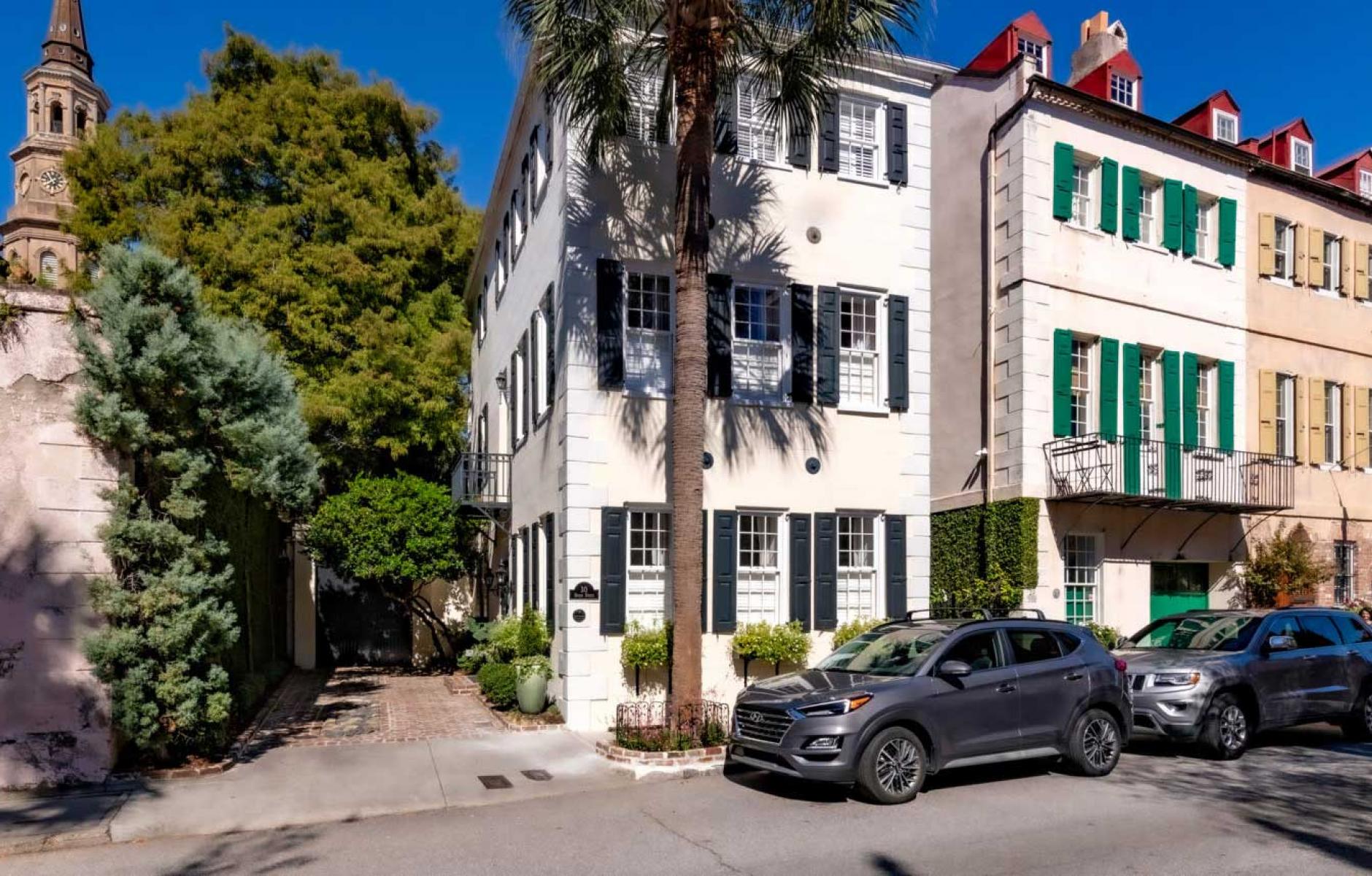
Twelve ways to achieve authenticity in community design
Some sources of authenticity in the built environment are obvious, beginning with integrity. Is the design true to itself, and without obvious internal contradictions? Places and buildings with integrity tend to bring more joy than those laden with conflict. Is the design appropriate to the region and its conditions, climate, and culture? Regional harmony brings comfort on several levels. Harmony with nature is larger and more profound, as it isn’t limited to a region, or even our planet. Modern life might seem increasingly disconnected from nature, but building in harmony with nature and its laws means the places we build can better adapt to change deep into an uncertain future. Put another way, harmony with nature means choosing the Original Green first, with only modest measures of Gizmo Green as needed.
And then there are the things that are adversaries of authenticity, beginning with the other edge of the time sword. The greatest single misconception of authenticity is that it rests on a bed of time: the longer it has been there, the more authentic it is. Patina equals authenticity. Few things could be further from the truth. True things are not synonymous with old things, and this becomes more so each year. When the American preservation movement began in earnest with the destruction of New York City’s Penn Station in 1963, protecting buildings 50 years or older was a good bet, because those built no later than 1913 included some of the best ever constructed in this country. But with each passing year, the window extended and now includes buildings from 1972. How many of them are worthy of protection?
The pursuit of maintenance-free perfection is the second great adversary of true authenticity, but it’s more of a frontal attack than the 50-year rule. When buildings and their subdivisions must be perfect (until they fail suddenly), we take many measures to extend the illusion of perfection in elements of places and buildings that were never designed to last.
So what’s the path today to true authenticity? The Industrial Development Complex has persuaded almost everyone that authentic design and construction is unaffordable to almost all of us. I can’t fight that alone, even though I know people like Clay Chapman who are dedicating their careers to proving otherwise. But few will listen. So I have a different approach: Build in such a way that elements of the place and of the building are indiscernible from those they are intended to represent. An arch in a brick veneer wall can look identical to one in a mass masonry wall, so long as we insist on it. It may be a little more expensive, but not onerously so. And people will pay more for things that are believable because they’re easier to love. I have been practicing design review according to these principles with everything from small hamlets to a major university for two decades, helping refine several billion dollars’ worth of construction in this time. And I’m now convinced that we’re closer to being able to take the next step to actually building it well, not just faking it well.
Great variety in narrow range
Authentic urbanism almost always has a great variety in a narrow range. Look closely at this Charleston block: the buildings are roughly the same height and three to five bays wide, but building and floor heights vary slightly, and each one is detailed a little differently from the others. Almost all of the greatest places on earth have a great variety in a narrow range, but human construction pales in comparison to how well nature achieves it, from leaves on a tree to snowflakes in a flurry. There may be no better way of building in harmony with nature than achieving a great variety in a narrow range. And doing so also builds great walk appeal.

Build markets to last
Build markets to last. Do we create anything more throwaway than strip malls and convenience stores? Buildings meant to be discarded after a short life are by definition some of the most inauthentic ever constructed, because disposable buildings must be erected at the lowest possible cost. And it’s not just the public realm that is impoverished; a city’s finances are depleted when throwaway buildings move from their initial use to a temporary, low-rent store. City markets built as civic buildings, on the other hand, can last for generations and become lovable landmarks.

Corner stores rule
This classic neighborhood center has live-work buildings on three corners and the neighborhood square on the fourth, just out of view to the right. The corner store should be a fundamental part of good urbanism. People fear businesses in neighborhoods, but scale is everything. A Walmart and its parking lot are so large and have such great impacts that they would destroy the neighborhood, but these businesses operate at the craft and artisanal scales and succeed through walk-in traffic.

Occasional live-work
Here’s an old idea we need to bring back: the Occasional Live-Work. It is a corner house with a slightly popped-out bay at the corner that can either be a fully glazed storefront or just a couple windows and a door at the corner. This allows the structure to go back and forth over the years between being solely a residence or housing a workplace as well. Every block corner should be entitled by right to include a home workplace that expresses itself on the exterior. Many of us now work from home with no outward expression, of course.

“Goldilocks Urbanism”
Most three-to-five–story development today goes to one of two extremes: buildings plopped on outparcels surrounded by parking lots, or uninterrupted blocklong structures. The former doesn’t create enough enclosure to transform the public realm into outdoor rooms, whereas the latter is oppressive, providing no relief. Authentic urbanism is “Goldilocks urbanism,” with repeated glimpses into the middle of the block. It’s the best of both worlds, with good outdoor room enclosure with the relief of the passages to the center of the block, while achieving comparable density.

The magic of alleys
This alley is only about 17 feet wide from building to building, but networks of alleys like this are facilitators of far greater inner-block density than pure street frontage development allows, and is much gentler than big buildings and big parking lots. Authentic urbanism—can you get the fire department to allow that? It totally depends on city leadership. A new mayor when first elected asked the fire marshal, “How much do you value your job?” “What do you mean?” “Our city committed to allow a place to design its Main Street a certain way, and you’ve obstructed that commitment for years. Honor it now, or I’ll find someone who will.” He did, and it looks great today—and is a safer place as a result.

Who does the neighborhood serve?
One more measure of authentic urbanism: What proportion of the citizens of a city does a neighborhood serve? On the left, mansions are facing the lake but can’t be fully seen because they are so large, and my drone could fly only so high. There are large houses to the top of the block, with similar-sized houses out of view across the street. The houses on the right side of the block are one- and two-bedroom cottages, with attached townhouses facing onto a green at the bottom of the block. When originally built, there was a range of values of close to 10-to-1 in the houses in this image.

Real shutters, please
Shutters are things that open and shut. If they don’t have hinges to allow them to do so, and if they don’t have shutter dogs to hold them open, they are not shutters, but rather “screw-on do-nothings” because they screw on the wall and do nothing. If you are designing or building and the building owner says they don’t need operable shutters, ask them, “So how many screw-on do-nothings would you like on your building?” Hopefully the answer is none.

Dense lots spur creativity
Excess turf is an indicator of lack of balance in sprawl subdivisions, designed for speed of production by the Industrial Development Complex, as it’s much faster to just plant grass than to include beds and hardscape. Those in traditional neighborhoods not burdened by lots so big they don’t know what to do with it all have the opportunity to build great outdoor rooms so they can actually inhabit and enjoy their entire property instead of just sweating and spending time and money to mow the grass each week. There is not another element in the built environment for which people would even consider performing weekly maintenance.

Self-supporting arches
This appears to be a newish building with clues I’ve cropped out to highlight what was done well: while the walls are likely brick veneer, the arches are self-supporting with appropriate height for their spans (1:6 is a good rule of thumb.) A common mistake is to assume that arches or lintels in brick veneer walls cannot be self-supporting. This is a reflex action to the fact that the common “soldier course lintel” actually is structurally unsound and requires a steel lintel to support it. The steel lintel is not only a dead giveaway (a bad fake), but it’s also an Achilles heel of the wall because if the owner neglects to paint it, it begins to rust and must eventually be replaced.

A bad fake or beautifully authentic?
Is this a bad fake or beautifully authentic? High classical on the left; a vernacular stone wall on the right. Common sense says that buildings like Rome’s City Hall should dress up for Michelangelo’s piazza out front but can let down its hair for a humble passage to the side. The key is that it’s the same thing dressing differently: a stone wall in high fashion on the left but in much simpler attire on the right. But if the core building exposed itself as a cheap “stud sandwich” build on the right with this left face, it would be “putting on airs” at best on the left.

More tiny shops
The easiest way to change the balance of business sizes is by adding tiny shops, some of which can be small enough to be single-crew workplaces. It’s also the least expensive option because the other way of changing the balance is to add more businesses on the large end of the spectrum, and most cities have an excess of megastores already, so that would move the balance in the wrong direction. An added benefit is that tiny shops tend to be the most lovable because of the Teddy Bear Principle so they get a lot of attention and tend to thrive, with reinforcing ripple effects.

This piece was published in Common\Edge




